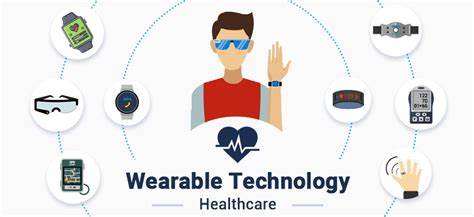Understanding Wearable Health Monitors
Wearable health monitors, continuously track various physiological parameters and have transformed personal healthcare. These devices, which range from smartwatches to fitness trackers, utilize advanced technology to help users manage their health proactively. Here’s a comprehensive overview of how these devices work, their benefits, and examples of effective wearable health monitors.

How Do Wearable Health Monitors Work?
Wearable health monitors operate using a combination of sensors, wireless technology, and mobile applications.
1. Data Collection
Firstly, wearables have sensors. These sensors collect data such as heart rate, blood oxygen levels, temperature, and activity. For example, a heart rate monitor uses light-emitting diodes (LEDs). These LEDs detect blood flow through the skin. This allows the device to calculate heart rate accurately.
2. Data Transmission
Secondly, once the data is collected, it transmits wirelessly. This happens to connected devices like smartphones or cloud systems. Then, Typically, this is done via Bluetooth or Wi-Fi. These technologies enable real-time access to health metrics. Users can view their data through dedicated mobile applications.
3. Data Analysis
Thirdly, many wearables use artificial intelligence (AI) and machine learning. These technologies analyze collected data. Additionally, They help identify patterns in a user’s health metrics. Moreover, This analysis provides insights or alerts for health issues. For example, a smartwatch can detect an irregular heart rhythm. This detection can prompt immediate medical consultation.
Benefits of Wearable Health Monitors
Wearable health monitors offer numerous advantages that enhance personal healthcare management:
1. Proactive Health Management
Firstly, these devices enable continuous monitoring. They do not rely on sporadic check-ups. Additionally, users receive alerts about irregularities. These can include abnormal heart rates or poor sleep quality. This allows for timely interventions. As a result, this proactive approach can significantly improve health outcomes.
2. Early Disease Detection
Secondly, wearables can detect subtle changes in health metrics. These changes may indicate developing conditions. For instance, a rise in resting heart rate may signal stress. It can also indicate illness. This prompts users to seek medical advice early.
3. Chronic Disease Management
Thirdly, For individuals with chronic conditions like diabetes or heart disease. This data aids in managing their conditions effectively. Moreover, continuous glucose monitors (CGMs) allow diabetics to track their blood sugar levels in real-time. Additionally, heart rate variability tracking helps patients manage their cardiovascular health better.
4. Personalized Medicine
Fourthly, Wearable devices support personalized healthcare. They tailor insights and recommendations based on individual data trends. Additionally, this customization empowers users to adjust their lifestyle choices. As a result, they can manage their health more effectively.
Examples of Effective Wearable Health Monitors
There are various wearable health devices available today, each designed for specific monitoring needs:
| Device Type | Functionality | Notable Examples |
|---|---|---|
| Fitness Trackers | Monitor physical activity, steps, calories burned | Fitbit Charge 5 |
| Smartwatches | Track multiple health metrics including heart rate | Apple Watch Series 9 |
| Continuous Glucose Monitors | Monitor blood glucose levels continuously | Dexcom G6 |
| Wearable ECG Monitors | Track heart rhythms and detect irregularities | AliveCor KardiaMobile |
Fitness Trackers
Fitness trackers are popular because they can monitor daily activity levels and provide insights into overall fitness. Then, They often include features like step counting and sleep tracking.
If you want to read this DeepSeek Click Here
Smartwatches
Smartwatches combine fitness tracking and additional features. Then, they offer notifications and app integration. They can monitor heart rates. Additionally, they provide alerts for irregularities.
Continuous Glucose Monitors (CGMs)
CGMs are essential for individuals with diabetes. They provide real-time glucose readings. Additionally, they send alerts for high or low blood sugar levels. This helps users manage their condition effectively.
Wearable Health Monitors ECG
Finally, These devices continuously monitor heart rhythms and can alert users to potential arrhythmias or other cardiac issues.
Conclusion
Wearable health monitors represent a significant advancement in personal healthcare technology. Then, They facilitate continuous monitoring and analysis of vital signs. This empowers users to take charge of their health proactively. Furthermore, ongoing technological advancements are enhancing these devices. They are increasingly integrating with healthcare systems.
As a result, wearables will play a more critical role in modern medicine. As you consider using wearable health monitors, reflect on your specific health needs. Choose a device that aligns with your goals for optimal health management.
